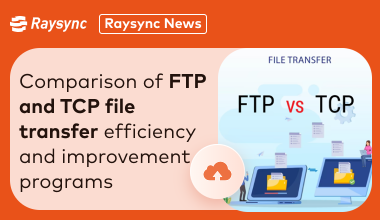Problems Faced by Transnational Transmission
May 20, 2020
As the development of economic globalization and Internet, especially the development of Internet information technology, it is easy to transfer data across borders. From a remote place, it only takes a few seconds to transfer files to an area of tens of thousands of kilometers. Transnational transfer of documents facilitates people's lives and makes communication less and less restricted.
However, due to the uneven legal construction of data protection in various countries and frequent international network attacks, the security problem of data transnational transmission also faces unprecedented challenges.
In recent years, more and more attention has been paid to network security because of issues related to personal information. In view of the problem of transnational data transmission, in order to protect the personal data of its citizens, many countries and regions have to some extent pursued localization of data collection, storage, and utilization, restricting or prohibiting the transnational flow of data. In order to break down barriers and restrictions on transnational data transmission in different countries and regions, promote the facilitation of global digital trade, more effectively implement law enforcement cooperation on cross-border data flow, and meet the actual needs of cross-border data transmission among enterprises, international organizations such as OECD and APEC have formulated a series of guidelines and policies to actively promote the liberalization of transnational data transmission.
Traditional transnational transmission is facing great challenges, mainly due to the influence of network physical conditions when dealing with remote data or transnational data transmission, traditional FTP, mail, instant messaging tools will cause high delay and high packet loss rate due to network conditions, and the stability and quality of data transmission cannot be guaranteed. How to ensure the stability, safety and controllability of data transmission under the premise of long distance has become a huge technical bottleneck. 1) Network physical conditions affect the stability of data transmission; 2) FTP and other traditional transmission modes have high delay and packet loss rate seriously affects the stability of data transmission; 3) Data security and confidentiality cannot be guaranteed during remote transmission;

To solve these problems, Raysync Transmission can make full use of the existing network bandwidth and provide stable and secure transnational data transmission services. It is mainly manifested in the high-performance transmission of TB-level files and massive small files, meeting the needs of enterprises for accelerated transmission of remote and transnational data under different scenarios. The utilization rate of broadband reaches 90%, the burden of redundant data is less than 1%, the cost of enterprise bandwidth is reduced, and the existing network resources are fully utilized. Point-to-point file transmission, full TLS encryption and AES-256 encryption support breakpoint resume, automatic retransmission and load balancing to ensure stable and secure transmission.
At present, Raysync Transmission has provided Huawei, OPPO, vivo, Wanda group, Perfect World with large file data transmission solutions. It is believed that in the near future, data transmission will be more convenient and fast, allowing everyone to enjoy the fun of science and technology.
You might also like

Raysync News
January 16, 2024This paper will explore specific application scenarios and best practices for file transfer in the healthcare industry, emphasize the importance of secure data transfer, and introduce the appropriate tools.

Raysync News
November 25, 2020Protecting your data in today's hyper-connected world is no easy task. Secure file transfer is an issue we always need to pay attention to.

Raysync News
January 18, 2024In this article, we will explore two common file transfer protocols: FTP and TCP, analyze their efficiencies, and propose how Raysync technology can improve file transfer efficiency.